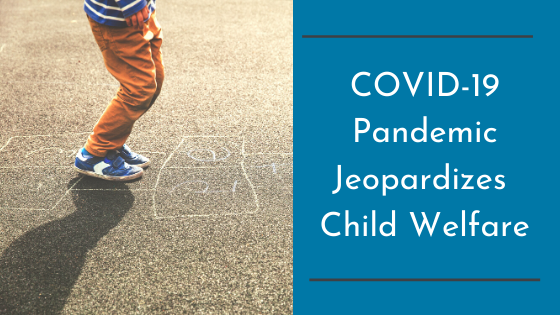Today’s blog is written by Megan Carolan, Director of Policy Research, Institute for Child Success
COVID-19 Pandemic Jeopardizes Child Welfare
The child welfare system faces a difficult double-bind during the current health crisis: children spending more time in potentially volatile home environments with fewer outside parties able to identify any dangerous conditions, while families currently in the child welfare system navigate prolonged separations and potential emotional trauma from separation.
The Issues
Nationwide, about 670,000 US children have experienced maltreatment, including over 17,000 children in South Carolina. About 40 percent of those are under age 5. There is a lot of nuances in the reasons why children and families may enter into this system and what happens with their cases thereafter. For example, child neglect, rather than abuse, account for about three-quarters of all substantiated cases – neglect refers to children not receiving their basic needs of food, shelter, care, and adequate supervision.
There is very real concern that the current crisis and resulting stay-at-home orders will result in increased rates of child abuse and neglect – at the very same time that most families are cut off from formal and informal support networks who may be able to identify these dangers. Experts report that major periods of anxiety and fear in the broader society are often linked to an uptick in child abuse and even child deaths, as happened during the financial crisis which started in 2007.
Reporting Requirements
So-called “mandated reporters” often provide an essential intervention for children experiencing abuse and neglect. While each state has different requirements, mandated reporters are professionals (and volunteers) working closely with families and children who are required by law to report suspected abuse and/or neglect: teachers, school staff, social workers, health care and mental health care professionals, child care providers, and law enforcement, for example. South Carolina’s Director of Social Services Michael Leach explained that the timing of this crisis is particularly concerning. March and April are usually the busiest months for referrals for abuse and neglect, with referrals generally decline in the summertime when students are out of school for the summer, but the department reports they had already seen declines in March. Children are currently cut off from in-person interactions with many concerned individuals who may notice that something is amiss.
Impacts of Isolation
The situation is also difficult for families currently in the child welfare system. NPR reports that families who are currently separated through the system are now relegated to only virtual means of connecting instead of in-person visits, which foster bonding and are an important part of reunification. The American Bar Association hosted a webinar on the difficult decisions agencies must currently navigate; the recording is now available.
Writing in the Chronicle of Social Change, Jerry Milner and David Kelly of the U.S. Children’s Bureau within the Department of Health and Human Services draw attention to the long-term impacts of these separations during an age of isolation, if not properly managed:
“When children are removed from their parents, even when necessary for their safety…they become distanced and that can be harmful to parents and children alike….As we struggle to develop responses and adapt, we cannot forget the simple fact that children miss their parents, parents miss their children, and that absent aggravated circumstances, they deserve a fair shot to be together or get back together as soon as there is not a safety risk. Further, it is not merely a matter of longing for contact, it is a matter of healthy brain development, maintaining critical bonds, and prevention of trauma that can persist for generations.”
Resources
There are no easy answers to these challenges. The Children’s Bureau has released a list of resources for the child welfare workforce as well as foster care families and children. The Zero to Three Foundation has archived a five-part webinar series exploring current COVID-related issues in child welfare for professionals including clinicians, home visitors, early childhood educators, child welfare professionals, and military and veterans groups.

